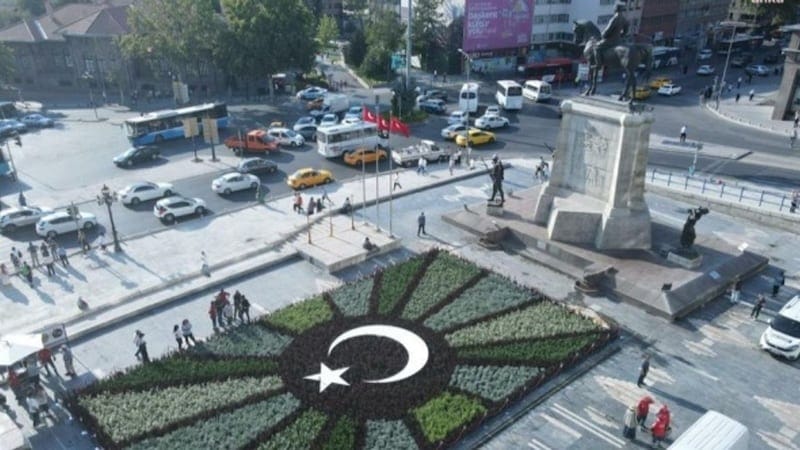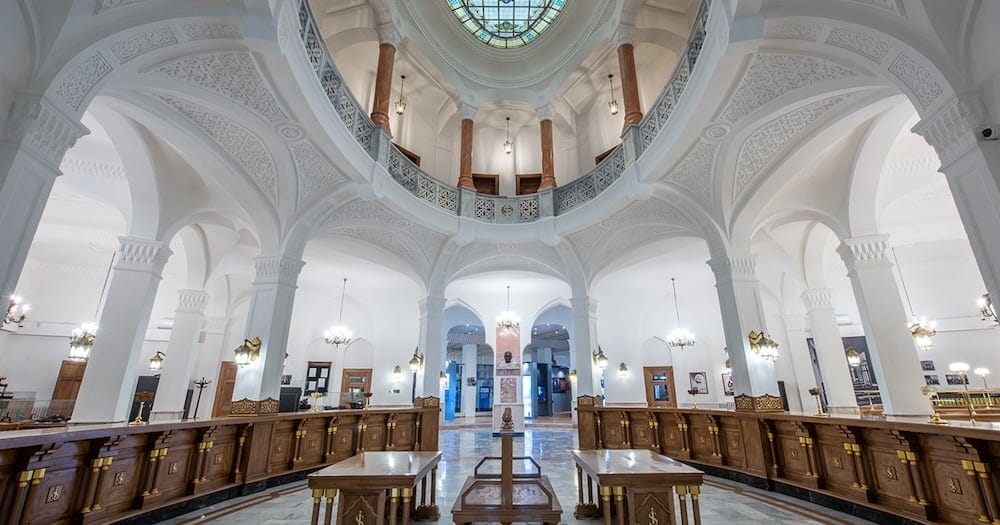We continue our museum journey in Ankara with various unique locations. Every corner of Ankara leads us to places that tell different stories in different fields. In a historical atmosphere, we suddenly return to the present, meet with art, follow in the footsteps of poets, ponder the story of a sculpture, and blend into the city’s crowd.
We are in Ulus. Transportation to this district, which is marked by history and culture, is possible by subway or bus from Kızılay, considered the heart of Ankara. The walking route which takes a maximum of half an hour is very enjoyable. If you prefer to come by car, it’s just a 10-minute drive. Today, we are heading to a different route in Ankara. Our first stop is a museum you would not frequently encounter.

A Unique Oasis for Stamp Collectors
We are used to visiting museums of liberation, art, and history in every city. However, not every city has a Stamp Museum. Every culture has its “stamp” enthusiasts—those who collect stamps or follow their history—but we rarely see cities with an actual stamp museum.
What is a stamp? It is a small piece of paper affixed to letters and packages sent by mail, indicating their value. But is that all a stamp means? Certainly not. Stamps, which tell the story of their era, also commemorate special events, significant figures, and important moments. We embark on a chronological journey in Turkey’s first and only Stamp Museum.
This building, constructed in 1934 in a neo-classical style by Austrian architect Clemens Holzmeister, was used as a public building for many years before being acquired by the Postal and Telegraph Organization (PTT) and converted into a Stamp Museum in 2013. The building has five floors and offers 6,500 square meters of usable space.
Every Stamp Tells a Different Story
In the museum, the history of the Postal and Telegraph Organization, the production and use of stamps, and stamp collections are on display. The museum showcases the journey of Turkish stamps, stamps printed and used in different periods, the equipment used in stamp production, and stamp designs. Visitors gain an artistic perspective on Turkey’s history through these stamps. The museum’s collection includes 4,404 original stamps and 1,500 pieces collected from various countries around the world.
Upon entering the building, we are greeted on the ground floor by historical sections and uniforms worn in the postal organization. On the first floor, stamps from the Ottoman Empire, the War of Independence, and the Republic period are displayed in chronological order. The second floor is divided into themed sections, totaling seven. On the third floor, stamps from 189 countries are exhibited. The basement houses a children’s club and stamps with children’s themes.
As each stamp tells a different story and holds its own unique history, we leave this exceptional museum, which contains nearly 6,000 stories, making note of the ones that captivated us the most. Our next stop is the Türkiye İş Bankası Museum of Economic Independence, which also reflects both history and Turkey’s rise.
Museum of Economic Independence: The Story of a Nation’s Rise

This museum, which tells the step-by-step story of Turkey’s economic rise, began operating as the 3rd General Directorate building of Türkiye İş Bankası in 1929. Designed by Italian architect Giulio Mongeri, the structure was influenced by Seljuk architecture and the First National Architectural Movement. Between the floors, you can see elements of Neo-Renaissance and Art Nouveau. The stained-glass windows, a highlight of the interior decoration, feature the Greek god Hermes, associated with money and trade. A meticulous team worked on the building’s transformation into a museum, blending historical and modern elements in its design.
Located on a corner in Ulus Square, the building seems to promise a historical journey. Upon entering, we are greeted by the counters and teller stations of a classic bank, evoking the feeling of stepping into a period film. The large wooden tables, waiting areas, and seating spaces immediately convey the importance given to minimalistic and elegant architecture of the past, capturing our attention as soon as we step inside.
Vaults Leading to Different Dreams
As we descend to the basement, we pass through a large vault door into an area filled with small safety deposit boxes. Who knows what lifelong investments, treasured memories meant to be passed down to children, or valuable belongings were stored here? What hopes and excitement were carefully placed on these shelves and locked away? Or perhaps, which unfortunate souls left their valuable possessions here, only to be forgotten? We don’t know, but we imagine.
While learning about Turkey’s economic history, don’t forget to look up. You’ll be greeted by a stunning stained-glass ceiling that will leave you in awe. The building’s historic windows not only offer a unique view of Ulus but also highlight the captivating architecture of the structure.
An Economic Perspective on Ankara, the City of Firsts
In this historic building, we witness the journey of Turkey’s first factories, their stories, and the economic breakthroughs and achievements of the early years of the Republic as the country sought to rise and stand on its own. Here, we follow the story of the factories personally established by Atatürk, where he even attended the groundbreaking ceremonies. The museum also showcases the history of the bank, from its foundation to its advertisements, and its contributions to the Turkish economy. A room where Atatürk was hosted in 1929 is preserved in its original state.
The museum embraces an interactive approach, with the entire 4th floor dedicated to the Turkish War of Independence—a floor that is particularly popular among children and a frequent destination for school trips. The 3rd floor serves as an art gallery for temporary exhibitions, while the 5th floor is used for various events.
As we leave the Türkiye İş Bankası Museum of Economic Independence, which is a work of art both from the outside and inside, we admire the light filtering through the stained-glass windows.
Our final destination is the Ziraat Bank Museum, Turkey’s first banking museum, located just 450 meters away from the Economic Independence Museum. This museum, like the previous one, was built in 1929 and designed by the same architect.
Ziraat Bank Museum: Turkey’s First Bank
Ziraat Bank Museum, built in 1929 and by the same architect as the Economic Independence Museum, was Turkey’s first bank. It showcases the commercial, economic, political, cultural, artistic, and educational evolution of Turkey’s banking system from its inception to the present day. It features numerous antique banking objects displayed in a historical setting, illustrating the growth of the banking system over time.
After a lengthy restoration process, the museum was modernized in line with contemporary museum practices while maintaining its traditional structure. When you step inside, it’s easy to feel like a bank customer—except for one key difference: you’re not from that era, and this bank doesn’t exist in your time. The museum offers a historical tour where you can see and experience everything that a bank of that period would have had. With its vast layout, towers, radio room, and main vault, Ziraat Bank Museum is certainly a must-visit among Ankara’s museums.
Witnessing History While Strolling Around Ulus
These three valuable museums, all within walking distance of each other, offer free entry and are open every day except Mondays. In Ankara, it’s easy to immerse yourself in museums, staying within a 500-meter radius. Stepping outside is enough to touch and experience various points of history and culture.
In a single day, we visited three museums, following Turkey’s pivotal moments through stamps, witnessing the efforts for development and economic independence after the founding of the Republic, and admiring Ankara’s firsts along with their impressive architecture. With so many historical treasures packed into one district, we find ourselves learning something new every day in this stunning atmosphere. Ulus continues to offer us more and more.
